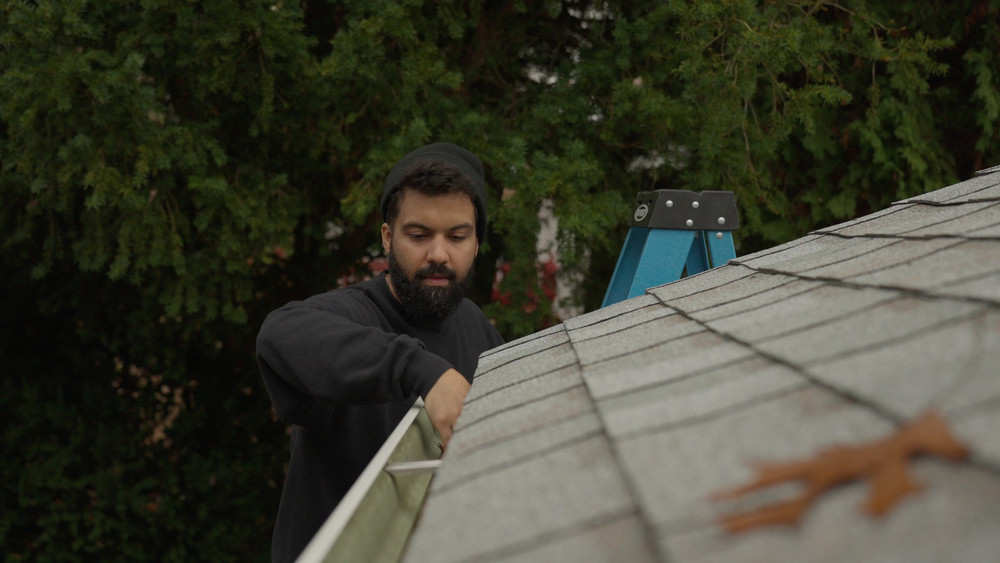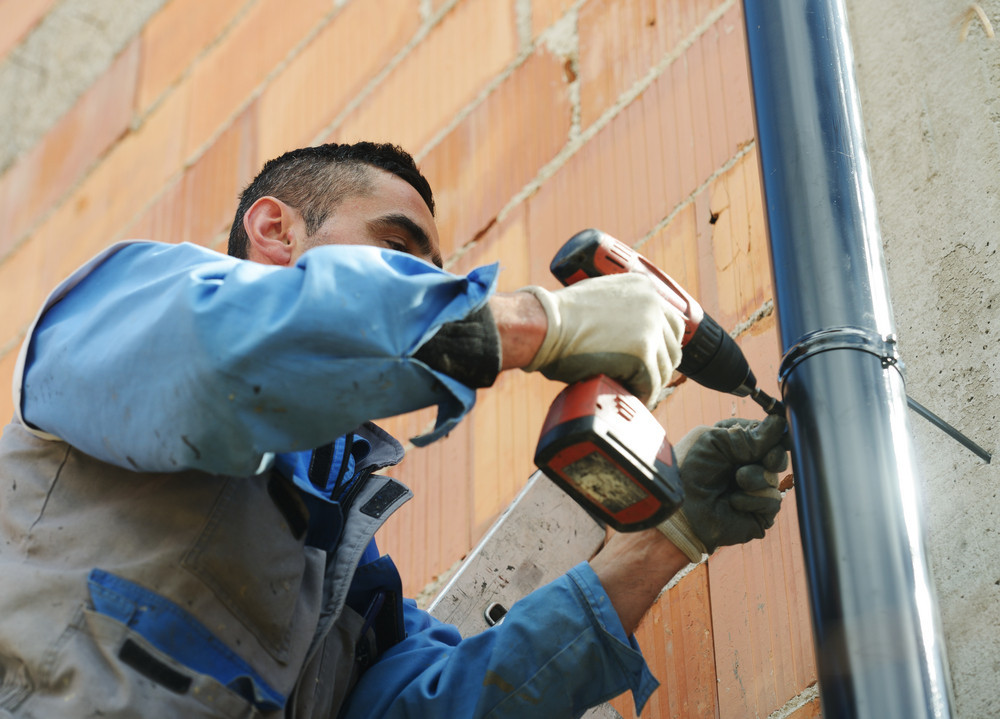Highlights
- Improperly pitched gutters can cause pooling water, overflow, and foundation damage.
- Visible sagging, uneven runoff, or standing water indicate incorrect gutter slope.
- Professional inspection ensures correct pitch and drainage toward downspouts.
- Clogged gutters, loose fasteners, or fascia rot often accompany poor drainage.
- According to the National Roofing Contractors Association (NRCA), roof water management directly affects roof lifespan and structural safety.
Understanding the Importance of Proper Gutter Pitch
Gutters play a vital role in protecting your home’s foundation, siding, and roofing system. When installed correctly, they channel rainwater efficiently away from the roofline and foundation. However, even a slight misalignment in the slope—or pitch—can lead to costly structural issues. Gutters need a subtle downward angle, typically around one-quarter inch per ten feet, to ensure water flows smoothly toward downspouts. If the pitch is too shallow or uneven, water can pool inside the troughs, creating ideal conditions for corrosion, mold, and overflow. Over time, this improper drainage can compromise shingles and fascia boards, causing leaks and wood rot that spread throughout the roofing system.
Pooling Water and Overflow During Rain
One of the most obvious signs of gutter pitch problems is standing water after rainfall. If you notice puddles that remain long after a storm, the gutters are likely sloped incorrectly. Water should continuously flow toward the downspout; any pooling means it’s trapped due to improper tilt. During heavy rain, this can cause overflow that cascades over the edges of the gutters, saturating soil near the foundation and damaging landscaping. According to the National Roofing Contractors Association (NRCA), unmanaged roof runoff is a leading cause of basement leaks and soil erosion around homes. Addressing poor gutter pitch early not only restores proper drainage but also safeguards your entire roofing system from avoidable moisture damage.
Uneven Flow or Dripping from Midpoints
Another telltale indicator of drainage issues is when water drips or flows inconsistently along the gutter line. Ideally, water should move in one continuous stream toward the downspout. If you see drips from the middle or water traveling backward toward the fascia, that section of gutter is likely sagging or bent. Over time, this irregular flow creates pressure on fasteners and joints, leading to leaks at the seams. These leaks can worsen quickly as moisture seeps beneath shingles and into underlayment materials. Correcting the slope often involves reattaching hangers, replacing compromised sections, and ensuring that every stretch maintains the correct angle from end to end.
Sagging or Bowed Gutters
A visible sag or bow in the gutter line is one of the easiest-to-spot warning signs of improper pitch. This condition usually develops when gutters become weighed down by debris, ice, or standing water. The extra weight pulls on fasteners and brackets, altering the slope and creating low points where water accumulates. Left unchecked, sagging gutters can pull away from the fascia and damage roof edges or soffit panels. Professional contractors typically assess whether the sag is due to fastener failure or structural warping. In most cases, re-pitching or replacing sections is required to restore efficient water flow and prevent future leaks along the roof perimeter.
Water Stains and Fascia Damage
If you notice streaks or stains along the siding, fascia, or soffit, it’s likely a result of water escaping where it shouldn’t. When gutters fail to drain properly, overflow can run down exterior walls, leaving visible discoloration. Over time, this moisture exposure leads to peeling paint, softened wood, and eventual rot. Staining near gutter seams or corners is particularly concerning—it often indicates that water is trapped due to improper slope or blockage. According to Roofing Contractor Magazine, maintaining correct gutter pitch is one of the simplest ways to prevent premature fascia deterioration, which can otherwise require extensive roof-edge repairs.
Foundation and Basement Issues
Poorly pitched gutters can indirectly threaten your foundation by allowing water to collect at the base of your home. As water pools along the perimeter, it seeps into soil and exerts hydrostatic pressure on foundation walls. This can lead to cracks, basement leaks, or shifting slabs. Even if your roofing system is in excellent condition, failing gutters can undermine structural integrity from below. Homeowners often notice musty odors or damp basement walls before realizing that roof drainage is to blame. Ensuring that gutters maintain a consistent pitch and clear downspouts is essential for directing rainwater safely away from your property’s base.
Mold Growth and Pest Activity
Improper drainage creates stagnant water conditions ideal for mold, mildew, and insect breeding. Mosquitoes, termites, and other pests are drawn to damp environments, and clogged or misaligned gutters provide exactly that. Mold growth often begins inside the gutter channel and spreads to nearby fascia or soffit materials. This not only affects curb appeal but can also impact indoor air quality if spores enter attic vents. Routine cleaning and professional inspection can identify whether these biological issues stem from incorrect pitch or simply debris buildup. Correcting the slope eliminates standing water and makes your gutter system less hospitable to pests and mold alike.
Noise or Splashback During Rain
If you hear unusual gurgling, splashing, or banging during rainstorms, your gutters may not be draining as intended. When pitch is off balance, water pressure builds in the system and exits unpredictably, sometimes causing splashes against windows or walls. These noises often accompany overflow or partial blockages within the downspout. In severe cases, trapped air can create suction pockets that shake loose gutter joints. A professional gutter contractor can diagnose these drainage sounds by measuring pitch and checking for uneven sections. Correcting the angle quiets operation, improves flow, and reduces water-related vibration damage along the eaves.
Soil Erosion and Landscaping Damage
Improperly sloped gutters often reveal themselves through erosion patterns around the home. You might notice soil being washed away or mulch displaced after heavy rainfall. This occurs because overflow water exits the gutter edge rather than the downspout, landing directly near your home’s perimeter. Over time, this uncontrolled runoff can create trenches, kill plants, and degrade topsoil stability. Beyond cosmetic impact, it also directs water toward the foundation rather than away from it. A properly pitched gutter system channels runoff smoothly through downspouts, allowing for controlled dispersion through splash blocks or extensions that protect both your lawn and your home.
When to Call a Professional
While some minor slope corrections can be performed by experienced DIYers, most cases of improper pitch require professional adjustment. Contractors use leveling tools, tension brackets, and precise measurements to recalibrate the angle for optimal drainage. In addition, they inspect for hidden damage such as fascia rot, loose spikes, or structural shifts in the gutter hangers. A qualified roofing or gutter specialist can also verify that the downspout placement aligns with roof valleys to prevent localized flooding. Investing in professional service ensures the system not only drains properly but also integrates seamlessly with the overall roof design and drainage plan.
Prevention Through Maintenance
The best way to avoid drainage problems is through routine maintenance and periodic inspections. Clean gutters at least twice per year—preferably in spring and fall—to remove leaves, dirt, and nesting debris. Check for sagging sections, leaks at joints, or signs of standing water after rain. Professional cleaning services often include pitch evaluation, giving you peace of mind that water is flowing correctly. Many homeowners also choose to install gutter guards or leaf screens to reduce debris buildup. Consistent upkeep extends gutter lifespan, protects the roofing system, and maintains curb appeal year-round.
Protecting Your Home from Water Damage
Recognizing the signs of improper gutter pitch is essential to preserving both your roof and foundation. Pooling water, visible sagging, and water stains are all early indicators of poor drainage. By addressing these issues quickly, you can prevent serious moisture damage and expensive structural repairs. Whether through seasonal cleaning or professional re-pitching, maintaining proper slope ensures that your gutter system performs efficiently through every season. A small adjustment today can prevent thousands of dollars in future repairs—protecting your home’s structure, beauty, and long-term value.





